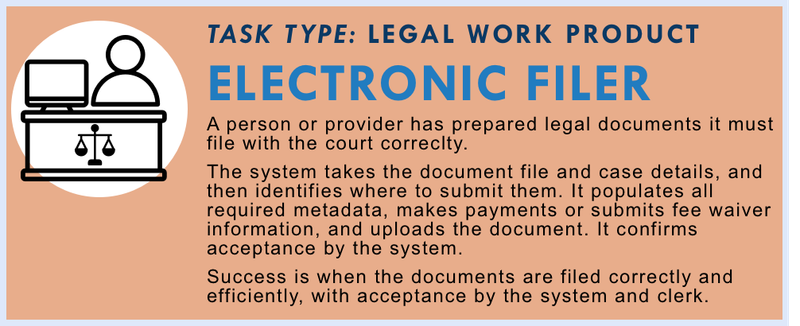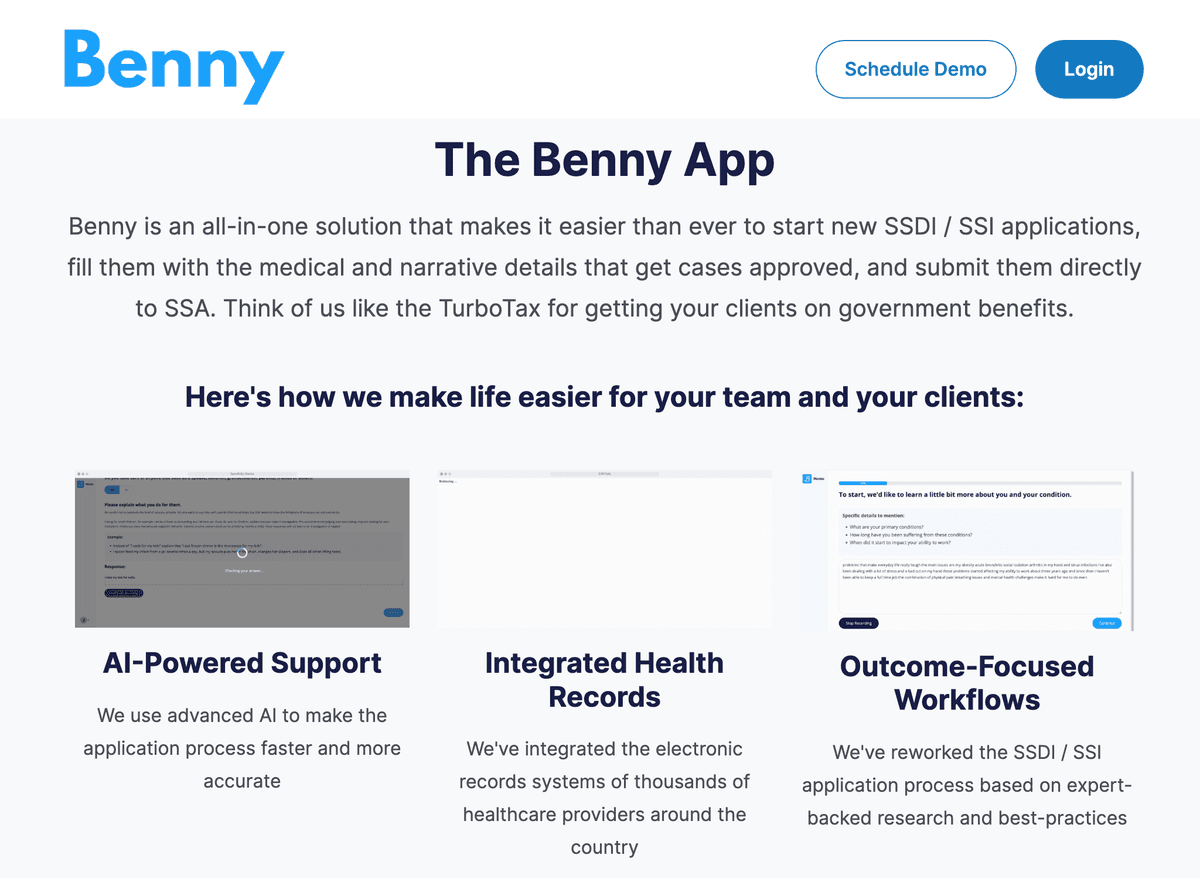Electronic Filer

Help people and providers file legal documents with courts correctly and efficiently—by handling formatting, submission, and confirmation.
Task Description
Once legal documents are prepared—whether by a person, a legal help organization, or a self-help tool—they must be properly filed with the correct court. This step is often confusing, high-stakes, and prone to failure: courts have strict rules about where and how documents must be submitted, what metadata must accompany them, what fees must be paid or waived, and what formats are accepted.
This task involves a system that acts as an automated e-filing assistant. The user or provider uploads the final legal document and inputs key case information (such as case number, court location, or type of filing). The system determines the correct filing portal or destination, populates all required metadata fields, attaches supporting documents (like fee waiver requests), makes necessary payments, and submits the filing to the proper court system.
After submission, the system confirms whether the document was successfully accepted or rejected. It provides a clear receipt, tracks the filing status, and helps the user or provider fix any problems if the filing is bounced back. For courts without e-filing portals, the system can generate next-step instructions for physical or email-based filing.
This tool is especially valuable for self-represented litigants, overworked legal aid providers, and cross-jurisdiction platforms trying to support users in multiple counties or court systems. It helps reduce rejected filings, missed deadlines, and confusion about filing requirements—while improving trust in the process.
Success means the filing is submitted accurately, accepted by the court, and the person or provider receives confirmation—without needing to manually navigate the complexities of each court’s rules.
How to Measure Quality?
🗂️ Filing Accuracy
- Submits to the correct court, division, and case type
- Includes all required supporting documents, signatures, and attachments
- Metadata fields (party names, case numbers, dates) are properly completed
🔁 Formatting and Compliance
- Converts or validates document format per jurisdictional requirements (PDF, OCR, etc.)
- Flags missing or invalid fields before submission
- Adjusts to local rules on document size, redaction, or page limits
💵 Fee Handling
- Identifies whether filing fees are required or waived
- Accurately submits fee waiver forms or processes payment via approved methods
- Tracks payment confirmations or waivers granted
📬 Submission Confirmation and Status Tracking
- Confirms successful submission and court acceptance
- Provides receipt or timestamp for filing
- Alerts user or provider if filing is rejected or under review
🔍 Error Detection and Resolution
- Detects common reasons for rejection (e.g., missing case number, wrong form)
- Suggests edits or re-filing steps with guided instructions
- Escalates rejections to provider staff with a clear explanation
🧑💼 Provider and User Experience
- Integrates with document generation tools or case management systems
- Allows self-represented users to review and approve filings before submission
- Supports multi-jurisdiction filing with clear configuration options
